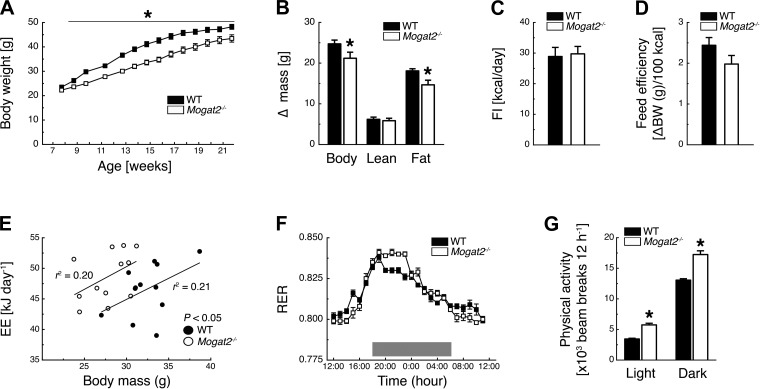Fig. 3.
MGAT2 deficiency protects against high-fat diet (HFD)-induced obesity. A–D: HFD (60% kcal from fat)-fed Mogat2−/− mice demonstrate delayed body weight growth (A) and decreased accumulation of body and fat mass (B) between weeks 8 and 22 compared with WT controls despite no significant differences in food intake (FI; C) or feed efficiency (D) (weeks 13 and 14). E: regression analyses of energy expenditure (EE) vs. body mass of mice. EE per mouse was plotted against the body mass of each mouse at the start of metabolic phenotyping. F and G: Mogat2−/− mice demonstrate lower and higher respiratory exhcnage ratio (RER) during the light phase and first half of the dark phase, respectively (F) and increased physical activity during the light and dark phase compared with WT controls (G). Ten-week-old male mice were acclimated individually to metabolic cages, and experiments were performed for 7 days. EE, RER, and physical activity data were averaged for the last 4 days. Gray area marks dark phase (1800–0600). *P < 0.05, WT vs. Mogat2−/−; n = 16 WT (A–D) and 16 Mogat2−/− (E–G); n = 12 WT and 12 Mogat2−/−.

